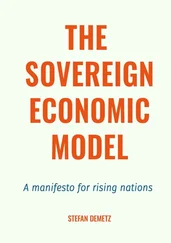Still none of this made a truly pluralistic regime inevitable, and its emergence was in part a consequence of the contingent path of history. A coalition that was not too different was able to emerge victorious from the English Civil War against the Stuarts, but this only led to Oliver Cromwell’s dictatorship. The strength of this coalition was also no guarantee that absolutism would be defeated. James II could have defeated William of Orange. The path of major institutional change was, as usual, no less contingent than the outcome of other political conflicts. This was so even if the specific path of institutional drift that created the broad coalition opposed to absolutism and the critical juncture of Atlantic trading opportunities stacked the cards against the Stuarts. In this instance, therefore, contingency and a broad coalition were deciding factors underpinning the emergence of pluralism and inclusive institutions.
8.
NOT ON OUR TURF: BARRIERS TO DEVELOPMENT
NO PRINTING ALLOWED
IN 1445 IN THE GERMAN city of Mainz, Johannes Gutenberg unveiled an innovation with profound consequences for subsequent economic history: a printing press based on movable type. Until then, books either had to be hand-copied by scribes, a very slow and laborious process, or they were block-printed with specific pieces of wood cut for printing each page. Books were few and far between, and very expensive. After Gutenberg’s invention, things began to change. Books were printed and became more readily available. Without this innovation, mass literacy and education would have been impossible.
In Western Europe, the importance of the printing press was quickly recognized. In 1460 there was already a printing press across the border, in Strasbourg, France. By the late 1460s the technology had spread throughout Italy, with presses in Rome and Venice, soon followed by Florence, Milan, and Turin. By 1476 William Caxton had set up a printing press in London, and two years later there was one in Oxford. During the same period, printing spread throughout the Low Countries, into Spain, and even into Eastern Europe, with a press opening in Budapest in 1473 and in Cracow a year later.
Not everyone saw printing as a desirable innovation. As early as 1485 the Ottoman sultan Bayezid II issued an edict that Muslims were expressly forbidden from printing in Arabic. This rule was further reinforced by Sultan Selim I in 1515. It was not until 1727 that the first printing press was allowed in the Ottoman lands. Then Sultan Ahmed III issued a decree granting İbrahim Müteferrika permission to set up a press. Even this belated step was hedged with restraints. Though the decree noted “the fortunate day this Western technique will be unveiled like a bride and will not again be hidden,” Müteferrika’s printing was going to be closely monitored. The decree stated:
so that the printed books will be free from printing mistakes, the wise, respected and meritorious religious scholars specializing in Islamic Law, the excellent Kadi of Istanbul, Mevlana İshak, and Selaniki’s Kadi, Mevlana Sahib, and Galata’s Kadi, Mevlana Asad, may their merits be increased, and from the illustrious religious orders, the pillar of the righteous religious scholars, the Sheykh of the Kasim Paşa Mevlevihane, Mevlana Musa, may his wisdom and knowledge increase, will oversee the proofreading.
Müteferrika was allowed to set up a printing press, but whatever he printed had to be vetted by a panel of three religious and legal scholars, the Kadis. Maybe the wisdom and knowledge of the Kadis, like everybody else’s, would have increased much faster had the printing press been more readily available. But that was not to be, even after Müteferrika was given permission to set up his press.
Not surprisingly Müteferrika printed few books in the end, only seventeen between 1729, when the press began to operate, and 1743, when he stopped working. His family tried to continue the tradition, but they managed to print only another seven books by the time they finally gave up in 1797. Outside of the core of the Ottoman Empire in Turkey, printing lagged even further behind. In Egypt, for instance, the first printing press was set up only in 1798, by Frenchmen who were part of the abortive attempt by Napoleon Bonaparte to capture the country. Until well into the second half of the nineteenth century, book production in the Ottoman Empire was still primarily undertaken by scribes hand-copying existing books. In the early eighteenth century, there were reputed to be eighty thousand such scribes active in Istanbul.
This opposition to the printing press had the obvious consequences for literacy, education, and economic success. In 1800 probably only 2 to 3 percent of the citizens of the Ottoman Empire were literate, compared with 60 percent of adult males and 40 percent of adult females in England. In the Netherlands and Germany, literacy rates were even higher. The Ottoman lands lagged far behind the European countries with the lowest educational attainment in this period, such as Portugal, where probably only around 20 percent of adults could read and write.
Given the highly absolutist and extractive Ottoman institutions, the sultan’s hostility to the printing press is easy to understand. Books spread ideas and make the population much harder to control. Some of these ideas may be valuable new ways to increase economic growth, but others may be subversive and challenge the existing political and social status quo. Books also undermine the power of those who control oral knowledge, since they make that knowledge readily available to anyone who can master literacy. This threatened to undermine the existing status quo, where knowledge was controlled by elites. The Ottoman sultans and religious establishment feared the creative destruction that would result. Their solution was to forbid printing.
THE INDUSTRIAL REVOLUTION created a critical juncture that affected almost every country. Some nations, such as England, not only allowed, but actively encouraged, commerce, industrialization, and entrepreneurship, and grew rapidly. Many, such as the Ottoman Empire, China, and other absolutist regimes, lagged behind as they blocked or at the very least did nothing to encourage the spread of industry. Political and economic institutions shaped the response to technological innovation, creating once again the familiar pattern of interaction between existing institutions and critical junctures leading to divergence in institutions and economic outcomes.
The Ottoman Empire remained absolutist until it collapsed at the end of the First World War, and was thus able to successfully oppose or impede innovations such as the printing press and the creative destruction that would have resulted. The reason that the economic changes that took place in England did not happen in the Ottoman Empire is the natural connection between extractive, absolutist political institutions and extractive economic institutions. Absolutism is rule unconstrained by law or the wishes of others, though in reality absolutists rule with the support of some small group or elite. In nineteenth-century Russia, for example, the tsars were absolutist rulers supported by a nobility that represented about 1 percent of the total population. This narrow group organized political institutions to perpetuate their power. There was no Parliament or political representation of other groups in Russian society until 1905, when the tsar created the Duma, though he quickly undermined what few powers he had given to it. Unsurprisingly, economic institutions were extractive, organized to make the tsar and nobility as wealthy as possible. The basis of this, as of many extractive economic systems, was a mass system of labor coercion and control, in the particularly pernicious form of Russian serfdom.
Читать дальше












